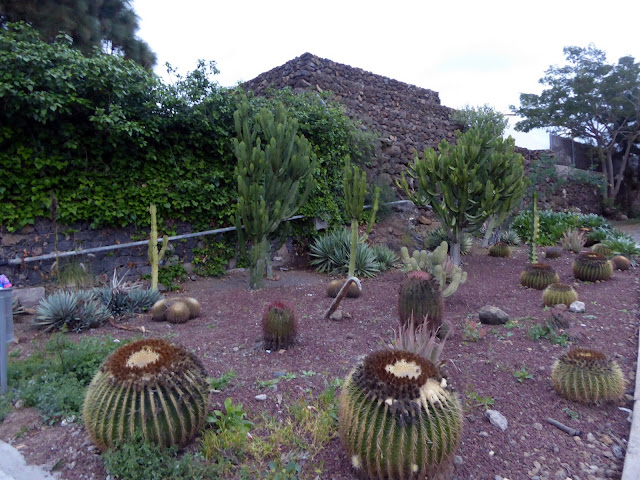Another week, another blog about Tenerife! This week is all about three curiosities of the island: black sand, funky trees,
and the pyramids of Guimar. If you'd like to see them for yourself, remember to check out our latest 360 video!
The black sand is very curious…it's made by the sea eroding the volcanic basaltic coastline, and it creates a strange and beautiful vista. The texture and
feel is very much like the yellow variety, which Tenerife actually imports in to cover
some of its beaches.
The downside of black sand is the
temperature that it can get to when the hot sun has been shining on it all day. Ouch!
Another strange element of Tenerife are its dragon trees, which are littered all over the island. These trees are
pretty special, with their distinctive shape and twisted branches.
The oldest and largest living dragon
tree on Tenerife is called Icod de los Vinos and it's found in a lovely botanical garden
that I did not enter and only saw from afar. I wasn’t in the mood to wander
around in the heat, even to see a thousand-year-old tree!
Younger dragon trees are all over the
island so there's no desperate need to see this particular one, despite its size and
age. I loved these trees. They reminded me that I was very close to Africa, which was easy to foget, since the culture on Tenerife is basically like mainland Spain.
The Guanches were the aboriginal
inhabitants of the Canary Islands and were of African descent, having migrated in
1000 BC. They were fairly isolated until the Spanish conquest in the 15th
century, when their culture and ethnicity was absorbed by the invaders. Not a
lot is known about the culture, which is a shame as island cultures that have
little contact with outside influences, always fascinate me.
One interesting place I visited was the
pyramids of Guimar. There is a theory that there existed a transatlantic link
between Egypt and Central America and that Tenerife served as a stopping point
during these voyages thousands of years ago. The Guanches built the pyramids,
as a place of worship and community with these travelling voyages.
The bad news is that archaeologists have
concluded that this theory is not actually true and in fact, the pyramids only date back to 19th
century farming practices. I love "out there" theories on ancient structures
so I will continue to believe in the more fanciful version because that's the
world I would like to inhabit!
On that topic, I definitely need to visit Göbekli Tepe in Turkey, which seems to be a complicated civilisation that existed before civilisations were supposed to exist (according to current archaeologists!)
On that topic, I definitely need to visit Göbekli Tepe in Turkey, which seems to be a complicated civilisation that existed before civilisations were supposed to exist (according to current archaeologists!)
I'll leave it there for today. And see you
next week for the final post on Tenerife!
 |
| Icod de los Vinos: The oldest and largest dragon tree in the world |








